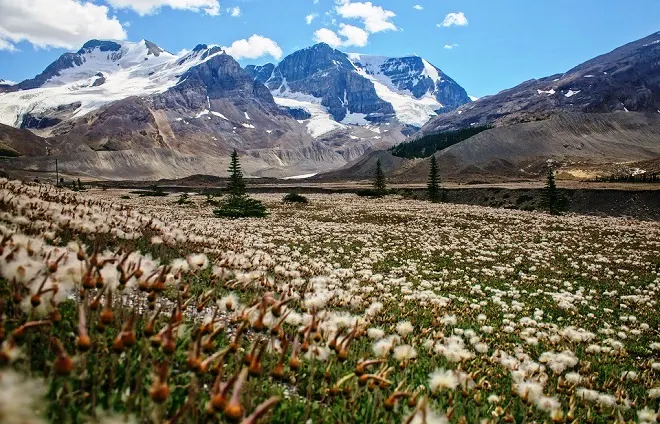One of the oldest glaciers on our planet is Athabasca Glacier, which is located in Canada in the Jasper National Park. It is considered to be easily accessible and therefore the most visited on the continent.
 |
| Athabasca Glacier |
What is so special about the glacier?
Athabasca Glacier is located in the Canadian Rocky Mountains in the Columbia Ice Field. Its age exceeds 10 thousand years, and a huge area covers an area of 6 square meters. km. It is currently retreating at a rate of 5 m per year.
If this continues further, then in a hundred years Athabasca will completely disappear. In this case, the glacier will leave behind a trench on a mountain slope between two moraines and a deep lake. Melt water will raise the general level of the World Ocean by several meters and, thus, a real catastrophe may occur.
 |
| Athabasca Glacier |
Glacier Description
Over the past 100 years, Athabasca has moved more than 1.5 km away, while in 125 years it has lost about half of its volume. Its slopes are rough and muddy, as the uneven heating mixes dust particles with the snow. The lower part of the glacier is dry and not slippery at all during the warm season.
What to see on the Athabasca glacier in Canada?
If you want to touch antiquity, feel like a rock climber or just dream of conquering a glacier, then you should climb its slopes. By the way, the distance to the top is marked here with special icons, so you can always determine where you are.
The higher tourists climb the glacier, the cleaner its slopes become. Here you can see how stone chips, framed by snow, shimmer in the sun no worse than gems. In the warm season, at the foot of Athabasca, there are flowers of cotton grass and piles of stones. The source of the Sanvapta River is located nearby. It flows into the lake of the same name, from where it flows into the Arctic Ocean through the water system of other reservoirs.
 |
| Athabasca Glacier |
Research Center
Opposite the glacier is the Icefield Research Center, which is open from April to mid-October. It is a small house where you can buy tickets, hire a guide or buy souvenirs.
From here, special hybrid truck buses leave, transporting tourists to the edge of the glacier. During the trip, cars overcome steep climbs and descents, while they stop at the most beautiful places so that travelers can enjoy the scenery and take photos.
Features of visiting the Athabasca glacier in Canada
Since the landmark is defeated by global warming, various processes take place with it: for example, melting snow or icefall. In order to preserve the life and health of tourists, the administration of the national park introduced some restrictions, for example:
- to approach the glacier closer than 50 m is strictly prohibited;
- it is not recommended to climb the summit of Athabasca without special training;
- you can visit the attraction from June to September;
- you can move along the slopes of the glacier as part of an organized excursion.
A small part of the glacier is closed for tourists, and the area, which cannot be visited without a guide, is fenced off with special ropes. Climbing over them is also prohibited, because there are many hidden crevasses on the slopes. They pose a great danger to untrained travelers who may suffer and even die there.
 |
| Athabasca Glacier |
How to get there?
You can climb the glacier by Ice Explorers bus or on foot. In the first case, the tour must be booked in advance, its cost is $ 60 for adults and $ 30 for children. Travel time takes up to 3 hours. On Sundays and Thursdays, the excursion can last 2 times longer, and costs $ 70 and $ 35, respectively.
In the second case, you will need comfortable clothes and shoes. The glacier slope is almost perfect. The main thing is to step only on the tops of ice drifts and stay away from the moraine.
From the nearest cities in Canada, you can get to the Athabasca Glacier along the AB-11 W, AB-16, AB-2 S, Trans-Canada Hwy / AB-1 W and AB-93 N.
